Chocolate, an Early California Food
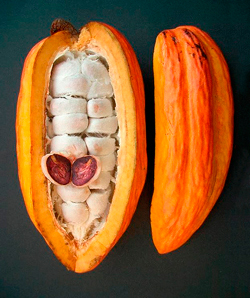
It was as a drink that Chocolate was used for centuries. Discovered in Mexico by the Spaniards it became an indispensable food to them and ultimately to the rest of the world. It was Cortez who suggested the bitter beverage be blended with sugar. The Spaniards mixed the beans with sugar, vanilla, nutmeg, cloves, allspice, and cinnamon.
The Spanish so loved their chocolate they kept it a secret from the rest of the world for almost 100 years! However, Spanish monks, who processed the cocoa, let the secret out and it did not take long before chocolate was acclaimed throughout Europe.
In France, chocolate was at first met with doubt, described at one point as a "barbarous product and noxious drug." But when Anne of Austria, wife of Louis XIII, declared chocolate as the drink of the French court it flourished. The Aztec regard for chocolate as an aphrodisiac was not lost here and it was reputed that Casanova used chocolate with champagne as a seduction. Somewhere in this fascinating history must lie the story of how chocolate evolved as the most popular Valentine's day gift!
By 1657, Chocolate houses were opening throughout Europe. Much like the coffee houses of our more recent times they became an important part of the social scene, meeting places to visit and to talk politics, although reserved primarily for the elite, as it was extremely expensive.
Finally! America discovers chocolate! The first chocolate factory was founded in 1765 in pre-Revolutionary New England and the production of chocolate then proceeded at a faster pace than anywhere else in the world. However, it was Spain who produced the first machine-made chocolate, and with the never-ending demand for chocolate, cocoa plantations spread to the tropics in both hemispheres by the 19th century. The increased production lowered the price of cocoa beans and chocolate finally became an affordable beverage for the populace.
When Pope Pius V declared that chocolate did not break the fast, it became a popular way to nourish oneself on the many religious fast days. The Mission Padres were so fond of it that they imported it in huge quanities; early ship manifests document this and describe it in varying degrees of quality too.
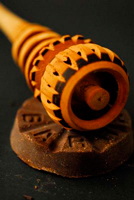
In Mexico and in Early California the drink was traditionally foamed using a molinillo, a wooden whisk-like tool that is twirled between the palms of the hands. This is still commonly used today in Mexico.
Chocolate was used as a drink until the 1800's when the technology of the industrial revolution helped transform chocolate from liquid into solid bars and mass production made the delicacy affordable to the masses.
Like wine, the character and flavor of chocolate is dependent on genetics, climate, soil and processing practices. The higher the quality of craftsmanship from bean to bar, the better the taste. The same qualities that define fine chocolate, including terroir, are similar to wine with most wine tasting terms easily applied to chocolate. Additionally, recent studies have shown that chocolate, like wine, contains certain chemicals that are beneficial to well-being, theobromine, which is chock-full of antioxidants, and phenylethylamine, a substance also produced by the brain when one is happy and in love, and which also helps control stress.
There are claims that there are between 300 and 600 chemical components in chocolate, making it one of the most complex foods in the world. This is only a short overview of its history, like its many chemical components, its history is complex. There are several good books for those interested in learning more.
Today there has been a renewal in the making of fine chocolate. Today's Chocalitiers are true artisans with a vision and desire to create the very best and most delicious product, and some of the very finest and most historic recipes used in the world can be found here in Old Town. While some are suited for the connoisseur, all are selected for their high quality and great taste.
While they are related, cocoa and hot chocolate aren't exactly the same. All things being equal, hot chocolate is a richer experience.
Classic drinking chocolates are the beverage of choice for purists. A classic holiday drink, redolent with dark chocolate, aromatic vanilla and swirls of velvety cream, they invoke images of early California, intimate Viennese coffeehouses or romantic Parisian cafés. Any one would appreciate a gift of fine chocolate. Just a few that can be found at the SOHO museum shop are:
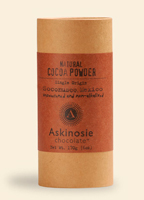 |
Askinosie - USA
|
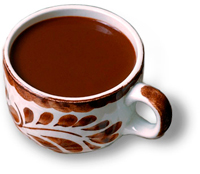 |
Kakawa
|
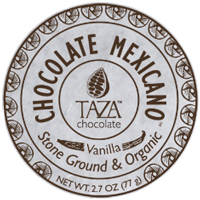 |
Taza Stone Grind
|
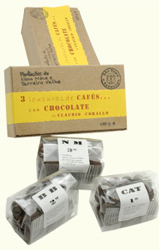 |
Claudio Corallo has found that the cacao pods behind excellent chocolate require careful attention at every stage, from pruning of the fledgling plants to the final, carefully hand picked harvest. Much like caring for olives that produce great olive oil, or grapes that yield fine wine, tending to cacao from the ground to the finished product is essential to making a chocolate of exceptional quality. Corallo spent years growing coffee in the middle of the Congo jungle, and through that experience cultivated his exceptional talent for producing agricultural excellence in the most difficult of growing conditions.
|
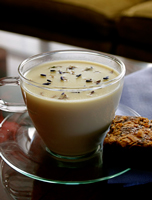 |
Anthony Grace Collection
|
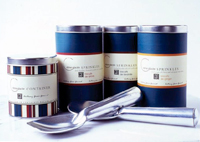 |
And just for fun, an unusual item from the same purveyor that we carry is the non-pareil, crème glace sprinkles that are spice-infused chocolate shavings plus other yummies that make your vanilla ice creme into a gourmet treat. We like the Biscuit de Spicey, a rich reward of chocolate biscuits, dark chocolate and a pinch of habañero peppers. |
Visit the SOHO Museum Shop
2476 San Diego Avenue · Historic Old Town San Diego
(619) 297-9327
Copyright ©2008, Save Our Heritage Organisation. Copyright Warning